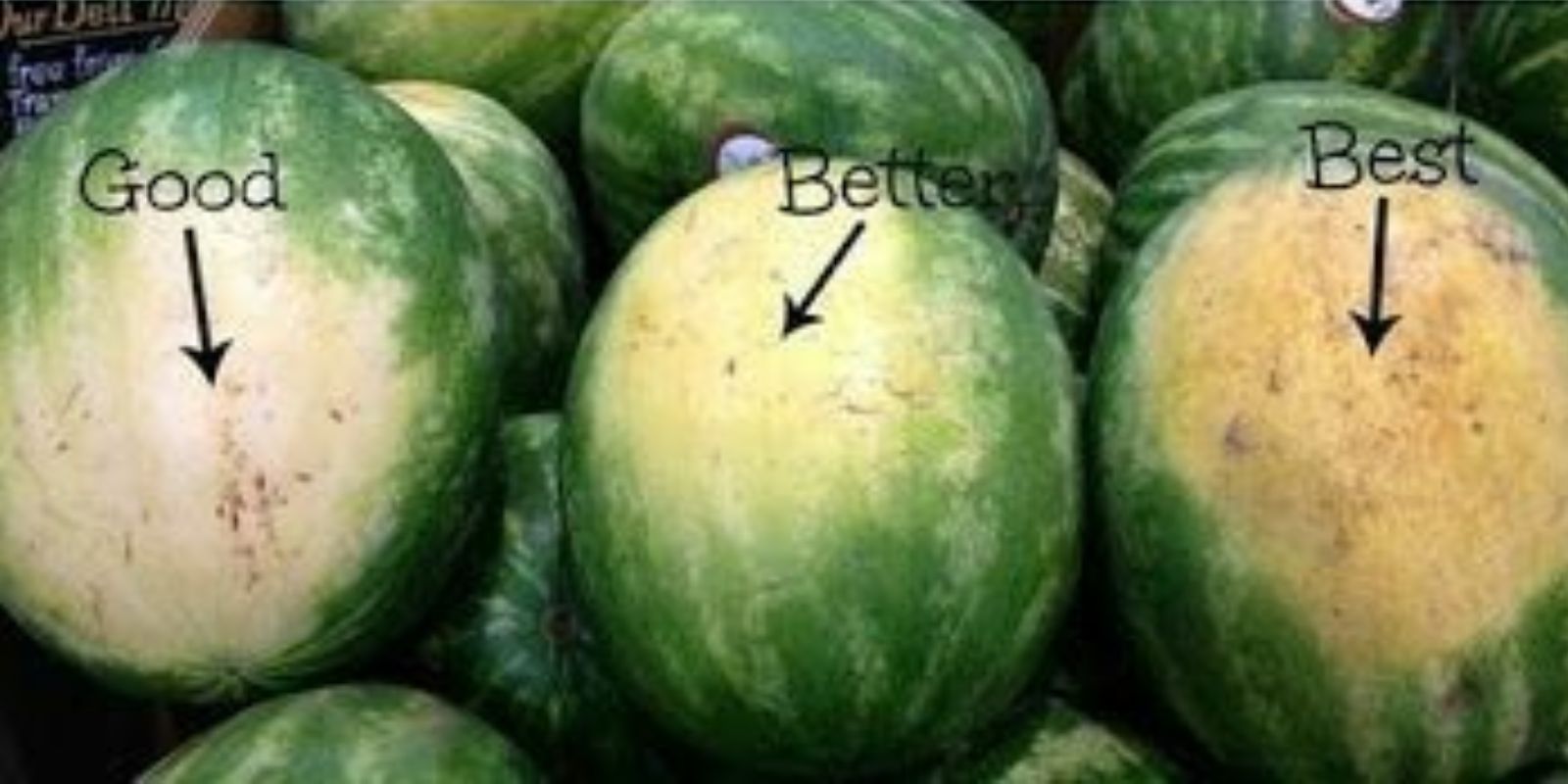Watermelons are the quintessential summer fruit, celebrated for their refreshing sweetness and hydrating qualities. Whether you’re planning a backyard barbecue, a picnic, or simply looking to enjoy a delicious slice of summer, selecting the perfect watermelon is essential. This article will guide you through the art of choosing a watermelon that promises to be sweet, juicy, and ripe, ensuring you make the best choice every time.
Introduction
A perfectly ripe watermelon can be a highlight of summer, offering a crisp, juicy burst of flavor that is both refreshing and satisfying. However, finding the ideal watermelon can sometimes be challenging, especially with so many factors to consider. By understanding key indicators of ripeness and quality, you can confidently select a watermelon that meets your expectations. This guide provides detailed steps to help you pick the best watermelon, enhancing your summer fruit experience.
Step 1: Check the Field Spot
Why: The field spot, or the area where the watermelon rested on the ground, can tell you a lot about its ripeness.
How:
- Locate the Spot: Look for a creamy, yellowish spot on the watermelon’s rind. This area indicates where the watermelon rested while growing.
- Color and Texture: A deep yellow spot suggests that the watermelon is ripe. If the spot is white or green, the watermelon may not be fully ripe.
- Avoid Green Spots: Green spots indicate that the watermelon was picked too early and may not have developed full sweetness.
Step 2: Inspect the Shape
Why: The shape of the watermelon can be a good indicator of its overall quality and ripeness.
How:
- Choose Symmetry: Select a watermelon that is symmetrical and uniform in shape. Irregularities or unevenness can indicate poor growth or inconsistent ripening.
- Avoid Dents and Irregularities: Look for a watermelon without dents, bruises, or irregularities. These imperfections can suggest damage or internal issues.
- Check for Cracks: Avoid watermelons with cracks on the surface, as these can be signs of overripeness or internal problems.
Step 3: Tap for Sound
Why: Tapping the watermelon can help you gauge its ripeness through sound. A ripe watermelon will produce a distinct sound when tapped.
How:
- Use Your Knuckles: Gently tap the watermelon with your knuckles.
- Listen for the Sound: A ripe watermelon typically produces a deep, hollow sound. This indicates that it is full of water and has a good internal structure.
- Avoid Dull Sounds: If the sound is dull or flat, the watermelon may not be as ripe or could be overripe.
Step 4: Feel the Weight
Why: The weight of the watermelon relative to its size can be a useful indicator of its juiciness and ripeness.
How:
- Lift the Watermelon: Pick up the watermelon and feel its weight. A heavier watermelon generally has more water content and is likely to be juicier.
- Compare Weights: Compare the weight of the watermelon with others of similar size. A watermelon that feels heavier is usually a better choice.
- Avoid Light Watermelons: If a watermelon feels unusually light for its size, it may have less water content and could be less juicy.
Additional Tips for Choosing the Perfect Watermelon
1. Look for Sugar Spots
- What They Are: Sugar spots are dark, rough patches on the watermelon’s rind, indicating that the fruit is sweet.
- Interpreting Sugar Spots: While sugar spots can be a sign of sweetness, ensure they are not accompanied by other signs of overripeness or damage.
2. Check the Stem
- Appearance: The stem of the watermelon should be dry and brown, not green. A green stem indicates the watermelon was picked too early and may not be fully ripe.
- Condition: Avoid watermelons with a fresh or green stem, as they are likely under-ripe.
3. Assess the Color
- Rind Color: The watermelon’s rind should have a deep, consistent green color. Light or faded patches can be a sign of an under-ripe fruit.
- Skin Texture: The texture of the rind should be firm and smooth. Avoid watermelons with soft spots or wrinkles.
Storing and Enjoying Your Watermelon
Once you’ve selected the perfect watermelon, proper storage and handling are key to enjoying it at its best.
Storage Tips
- Refrigeration: Store the watermelon in the refrigerator if you are not consuming it immediately. Whole watermelons can be kept in a cool, dry place for up to a week.
- Cut Watermelon: If you have cut the watermelon, cover it with plastic wrap and refrigerate. It’s best consumed within a few days.
Serving Suggestions
- Chilling: For an extra refreshing treat, chill the watermelon in the refrigerator before serving.
- Serving Ideas: Watermelon can be enjoyed on its own, added to fruit salads, or used in smoothies and cocktails. Try pairing it with mint or feta for a delightful twist.
Conclusion
Choosing the perfect watermelon involves a combination of visual inspection, tactile assessment, and sound judgment. By following the steps outlined in this guide—checking the field spot, inspecting the shape, tapping for sound, and feeling the weight—you can confidently select a watermelon that is ripe, juicy, and delicious.
With these tips, you can enhance your summer fruit experience and enjoy the sweet, refreshing taste of a perfectly chosen watermelon.
Motivation: Use these tips to pick the juiciest, sweetest watermelon and enjoy a burst of summer flavor in every bite! 🍉

